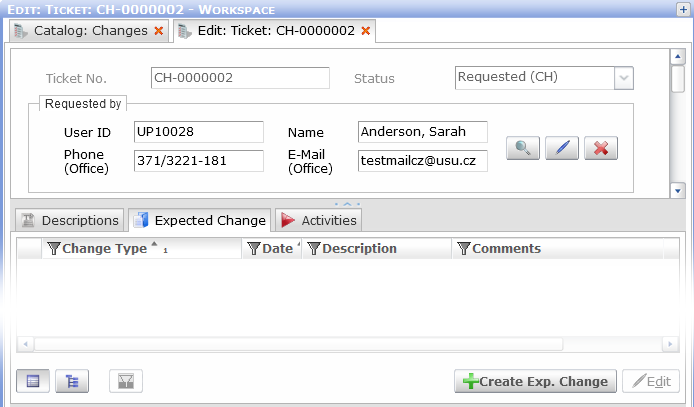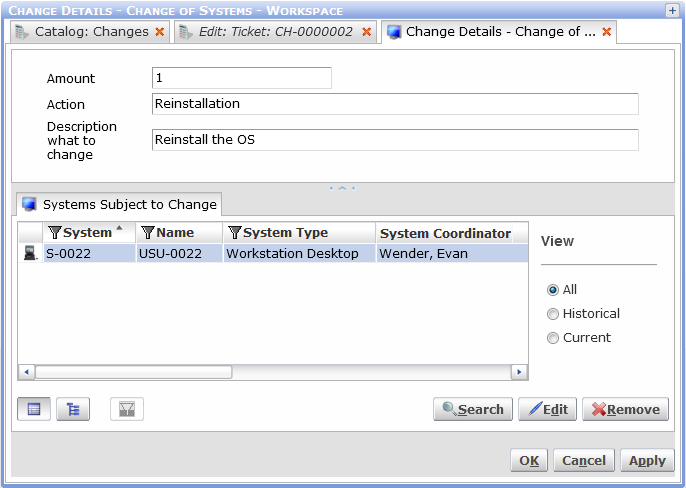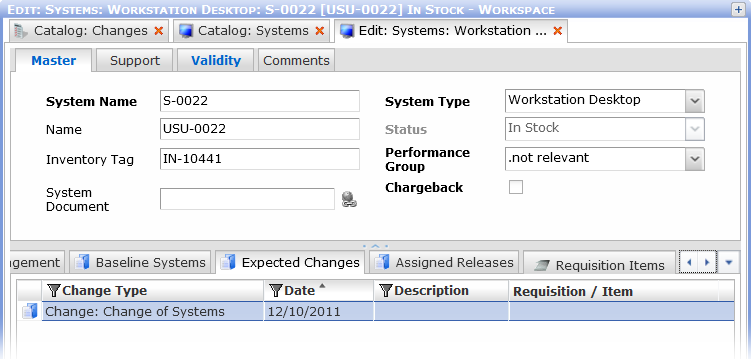Integration With CMS
The Change process is connected with CMS via so called Expected Changes. Both the Change ticket editor and Activity editor provide a reference catalog (located on the Expected Change tab) which enables registering of physical changes to the system and linking this information to configuration items present in the CMS.
- Go to the Expected Change tab of the editor.

- Click the 'Create Exp. Change' button. You are presented with a catalog of change detail types. Change details are objects describing the expected change to the system. Data structure of Change Details varies depending on the corresponding Change Type. For a change ticket, the following change types are applicable:
- Change: Change of Systems
- Change: Change of Components
- Change: Change of Services
- Double-click one of the catalog items pertaining to the above mentioned change types. A Change Details editor opens.

- In the editor, provide relevant information in the Amount, Action and Description what to change fields. Use the Systems Subject to Change editor tab to link affected configuration item(s). (The Search button on the tab opens a catalog with configuration items present in the CMS.) This reference catalog of systems subject to change represents a link between the change ticket and the CMS system.
Note: Conversely, the information about this expected change can be see in the Expected Changes reference catalog of the affected system(s). This represents a link between the CMS system and change tickets.
|
